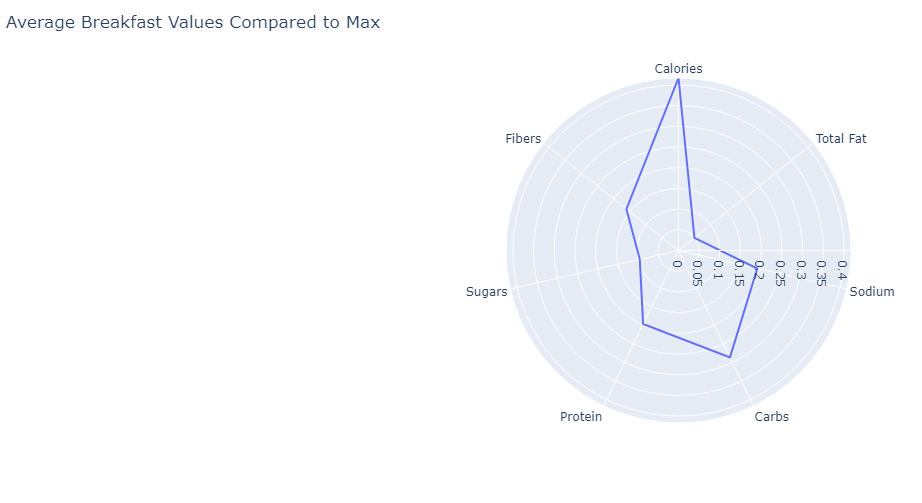Breakfast Insights
Welcome to the Breakfasts Page! Here you will be able to find our data and conclusions on common breakfast foods.
Overall Trends
For overall trends, we found that several breakfast food items in our dataset ranked highly in protein content, sodium, and calories. Taking a look at the aggregate, most breakfast food items on average had large calories amounts, while outliers contributed the most to high sodium, carbs, and protein amounts in our dataset.

In the parallel chart, we can see that the darker the line is in the parallel chart the lower the total calorie levels are. With dieting, or people watching their diet, the most important portion that one would look at would be the calories portion. With each of the lines, we can see the lowest calorie cereals also have the lowest 3 Fat categories, Sugar, Cholesterol. Thus, we can utilize this information on what categories impact the total calorie intake. This can also infer consumers further what food groups really impact total calorie consumption.

Above is a radar figure explaining what most breakfast foods contain in terms of the same 7 categories as in the other radar chart. In this, we can see the same spike/max in calories, whereas the other levels of sugar, fibers, and carbs are lower than the average cereal. For those who have trouble keeping their sugar, and carbohydrate levels down we could recommend only eating cereals a few times a week and rather recommend them to take other breakfast options into mind. Each of the values other than calories is less than 0.3 units in each of the categories - showing a huge difference from cereals as the majority of the groups are about 0.3 units.

In this heat plot, we can see where the majority of breakfast foods range when plotted with an x-y of calories and protein. The majority of the breakfast foods range between 0 to 10 grams of protein and less than 200 calories - with 12 different breakfast food options in there. In addition, 8 different breakfast food options range between 400 to 600 calories, which is almost 20 - 30% of your daily recommended caloric intake. Thus, we can see that within cereals most of the cereals are less in calories than the other breakfast food options. Thus, if calories are what one is watching the most, cereal can be a good way we can keep to a certain calorie level.
Conclusions
Breakfasts is the most important meal of the day and that can be seen here. The variety of breakfast foods allows for different ways nutrients, vitamins, minerals, and general macros are consumed. We hope you found our website insightful for what type of breakfast and cereals should be consumed when tailored to the specific gender and age groups.